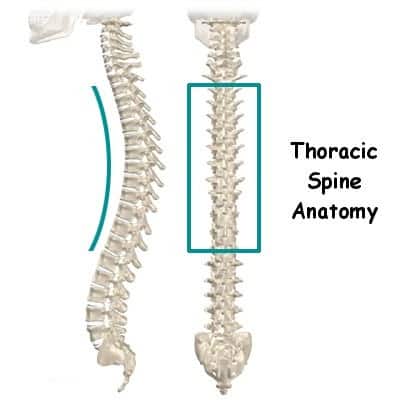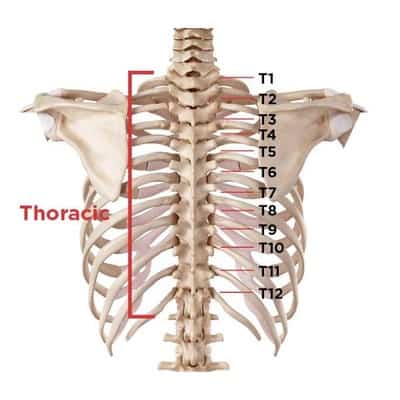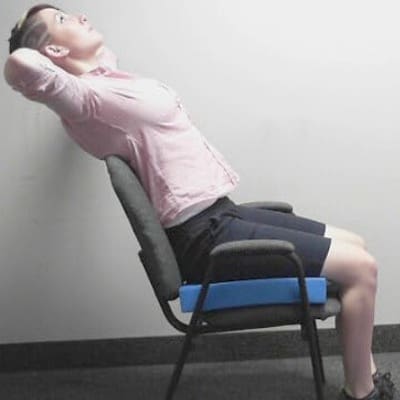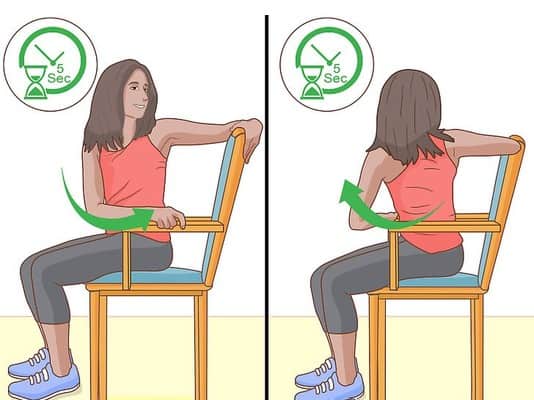Most of us have felt it – that discomfort seemingly in no man’s land, somewhere between the shoulder blades where you can’t quite reach. You twist around, try to push your back into the chair, but can’t seem to relieve it.
So why does this happen, and how can it be fixed?! Read on to find out:
Basic structure of the upper back
What causes upper back pain
How you can address upper back pain today
What causes Upper Back Pain?
Oftentimes during the day, especially if you have a desk job, you end up sitting in a way that puts the upper back in a forward, rounded position for long periods of time. After hours and hours of this, you’ll likely feel stiff! This stiffness results from lack of movement of both joints and muscles. Typically, the joints of the upper back become less mobile into extension, or the backward motion. In addition, the muscles of the chest and upper back may become less pliable. The muscles in the chest area are forced into a shorter position, while those in between the shoulder blades are in a longer position than typical upright posture.
These alterations in normal mobility can cause discomfort as you try to move again, because the small joints can stiffen up and as a result, move less smoothly. This can even lead to discomfort in a region that is not directly on that joint – it may cause symptoms near the ribs or shoulder blades. In addition, the muscles that are forced into a longer position may lose the ability to function well. This could lead to overactivity and weakness in those muscles, also contributing to upper back pain!
In addition, because mobility of the upper back is necessary for full shoulder motion, your shoulders may be affected by your back!

Basic Structure of the Upper Back
Let’s start by taking a look at the basic anatomy. The typical resting position of the upper back is slightly rounded, or kyphotic. The bones and joints have the ability to bend further forward, bend backward, and do a small amount of rotation and side bending. The upper back has less motion than the neck or lower back due to the attachment of the ribs.


How You Can Address Upper Back Pain Today
In order to improve the mobility of the upper back and decrease muscle tension, you can apply some simple postural fixes to your desk and incorporate a few easy home exercises.
The easiest tip is to set a timer to stand up and move around at least every 45 minutes – it’s too easy to get focused and stuck in one spot for 2 hours.
In addition to moving more often, try the following 2 exercises to improve upper back mobility and reduce pain and stiffness!
These may be difficult to do at work – we understand!
We suggest modifying them so that you are getting similar motions, but in a seated position as seen below.
Give these a try several times per day for a few weeks, and if you’re still struggling with upper back pain, give us a call! Some people need a more individualized and in-depth program to get to the root of the issue, and we are experts at providing just that. Let us know how we can be of assistance!




